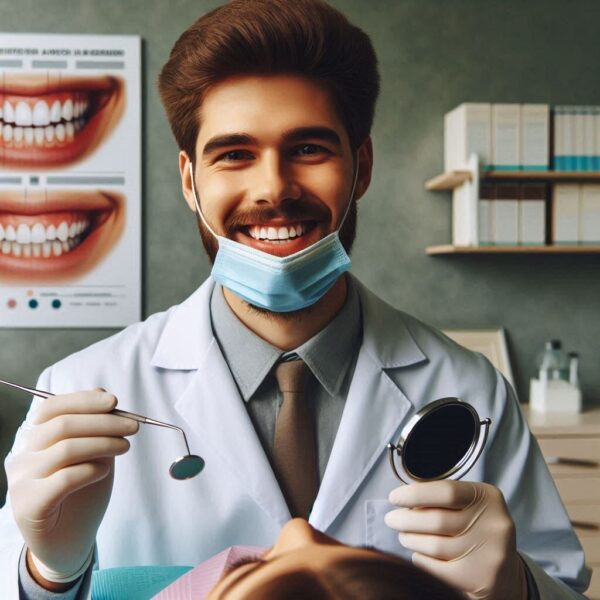
Fixing crowded teeth involves various dental treatments tailored to address misalignment and create a straighter, more harmonious smile.
From traditional braces to modern orthodontic solutions like clear aligners, there are options to suit different preferences and needs.
Additionally, dental procedures such as tooth extraction or dental expansion may be recommended to create space and alleviate crowding.
Seeking consultation with a qualified orthodontist is the first step toward determining the most suitable treatment plan for achieving a beautifully aligned smile and improving oral health.
How To Fix Crowded Teeth
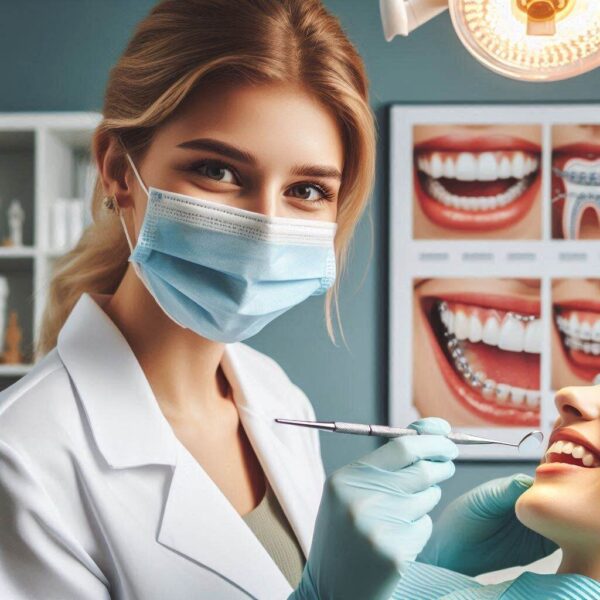
Correcting Crowded Teeth: Treatment Options and Procedures
Crowded teeth, characterized by teeth that are misaligned or overlapping due to insufficient space in the jaw, can not only affect the aesthetics of your smile but also impact oral health.
Fortunately, several treatment options are available to address this common dental issue and create a straighter, more harmonious smile. Here’s a comprehensive guide to fixing crowded teeth:
1. Orthodontic Treatments
- Traditional Braces: Traditional metal braces are a tried-and-true method for straightening crowded teeth. They consist of metal brackets attached to the teeth connected by wires that gradually shift the teeth into proper alignment.
- Clear Aligners: Clear aligners, such as Invisalign, offer a discreet alternative to traditional braces. These custom-made, removable aligners gradually move the teeth into their correct positions, providing a more aesthetically pleasing and comfortable orthodontic solution.
2. Dental Expansion
- Palatal Expansion: In cases of narrow dental arches or overcrowding due to insufficient space, palatal expansion may be recommended. This procedure involves widening the upper jaw to create additional space for crowded teeth to move into proper alignment.
3. Tooth Extraction
- Selective Tooth Extraction: In severe cases of crowding, tooth extraction may be necessary to create space for the remaining teeth to align properly. Orthodontists carefully evaluate the teeth and may recommend removing one or more teeth to alleviate crowding and achieve optimal alignment.
4. Dental Procedures
- Interproximal Reduction: Also known as slenderizing or enameloplasty, interproximal reduction involves gently shaving small amounts of enamel between crowded teeth to create additional space for alignment. This minimally invasive procedure can help improve tooth alignment and reduce the need for tooth extraction.
5. Retention
- Retainers: Following orthodontic treatment, wearing retainers is essential to maintain the newly aligned position of the teeth. Retainers help prevent relapse and ensure long-term stability of the results achieved through orthodontic treatment.
Consultation and Treatment Planning
The first step in fixing crowded teeth is to schedule a consultation with a qualified orthodontist. During this appointment, the orthodontist will evaluate the severity of the crowding, assess your oral health, and discuss your treatment goals and options.
Based on this assessment, a personalized treatment plan will be developed to address your specific needs and achieve a straighter, more aligned smile. After reading so far now you understand How to fix crowded teeth.
What Causes Crowded Teeth?
Understanding the Causes of Crowded Teeth
Crowded teeth, a common orthodontic issue, can be caused by various factors that affect the development and alignment of the teeth and jaw. Understanding the underlying causes of crowded teeth is essential for determining the most appropriate treatment approach. Here are some common factors contributing to crowded teeth:
1. Genetics
Genetics play a significant role in determining the size and shape of the jaw, as well as the alignment of the teeth. Individuals with parents who have crowded teeth or a narrow dental arch are more likely to inherit these traits, increasing their risk of developing crowded teeth themselves.
2. Jaw Size and Shape
A discrepancy between the size of the teeth and the size of the jaw can lead to crowded teeth. When the jaw is too small to accommodate all the teeth properly, crowding may occur as the teeth compete for space within the limited jaw space.
3. Early Loss of Primary Teeth
Premature loss of primary (baby) teeth can disrupt the natural eruption pattern of permanent teeth, leading to crowding as adjacent teeth drift into the empty space. It’s essential to maintain the integrity of primary teeth until they are naturally ready to exfoliate to prevent crowding in the permanent dentition.
4. Oral Habits
Certain oral habits, such as thumb sucking, tongue thrusting, or prolonged pacifier use, can exert pressure on the teeth and jaws, affecting their alignment and leading to crowding. Addressing these habits early can help minimize their impact on dental development.
5. Dental Trauma
Traumatic injuries to the teeth or jaws can disrupt the normal alignment of teeth and interfere with their proper eruption. Depending on the severity of the trauma, crowded teeth may develop as a result of these disturbances in dental development.
6. Dental Disease
Conditions such as tooth decay, gum disease, or dental abscesses can lead to premature tooth loss or damage, which may contribute to crowding as neighboring teeth shift or drift out of position.
Why Crowded Teeth Are Bad
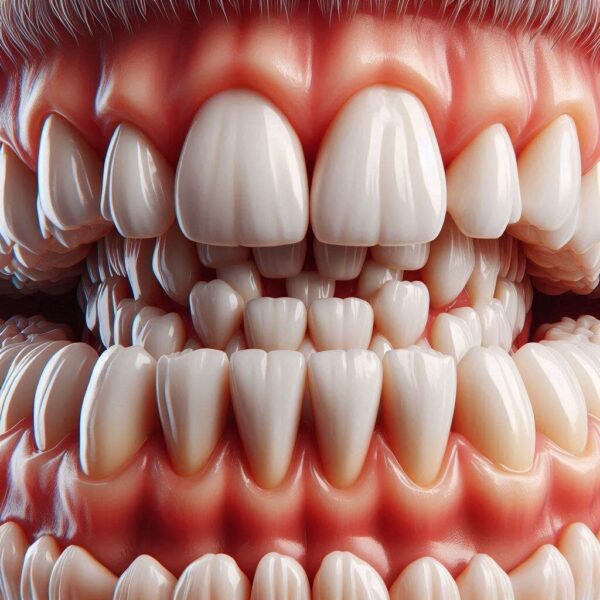
Understanding the Negative Impacts of Crowded Teeth
Crowded teeth can lead to various oral health issues and functional problems, highlighting the importance of addressing this common orthodontic concern. Here are several reasons why crowded teeth are considered detrimental:
1. Increased Risk of Tooth Decay and Gum Disease
Crowded teeth are more difficult to clean effectively, as overlapping or misaligned teeth create tight spaces where plaque and bacteria can accumulate. Inadequate oral hygiene in these areas can lead to an increased risk of tooth decay, cavities, and gum disease, as well as other oral infections.
2. Difficulty Maintaining Oral Hygiene
Proper oral hygiene becomes challenging when teeth are crowded, as toothbrushes and dental floss may not reach all surfaces effectively. Consequently, individuals with crowded teeth may struggle to maintain optimal oral hygiene, leading to a higher likelihood of dental problems over time.
3. Increased Risk of Dental Trauma
Crowded teeth are more prone to dental trauma due to their misalignment and protrusion. The irregular positioning of teeth can increase the risk of chipping, fracturing, or knocking out teeth, especially during accidents or sports-related injuries.
4. Functional Issues
Crowded teeth can affect bite alignment and occlusal function, leading to issues such as difficulty chewing, jaw pain, and temporomandibular joint (TMJ) disorders. Malocclusion resulting from crowded teeth may also contribute to abnormal wear and tear on the teeth and jaw joints over time.
5. Aesthetic Concerns
Crowded teeth can have a significant impact on the appearance of the smile, causing self-consciousness and lowered self-esteem in affected individuals. The visible misalignment or irregular spacing of teeth may detract from an otherwise attractive smile, leading to social and psychological discomfort.
6. Speech Impediments
In some cases, crowded teeth can affect speech clarity and articulation, particularly when misaligned teeth interfere with tongue and lip movement. Pronunciation difficulties and speech impediments may arise due to the irregular positioning of teeth.
How To Fix Teeth Crowding Naturally?

Exploring Natural Methods to Address Teeth Crowding
While orthodontic treatment is the most effective way to correct teeth crowding, some natural methods may help alleviate symptoms or prevent further progression. Here are some strategies to consider:
1. Oral Exercises
Performing specific oral exercises, such as tongue thrusting exercises or tongue sweeps, may help strengthen the muscles of the tongue and mouth, promoting proper tongue posture and alignment of the teeth over time.
2. Proper Oral Posture
Maintaining proper oral posture, including resting the tongue on the roof of the mouth and keeping the lips sealed, can encourage optimal dental alignment and reduce the risk of crowding. Practicing correct oral posture throughout the day may help prevent worsening of crowding.
3. Healthy Diet
Consuming a balanced diet rich in essential nutrients, particularly calcium and vitamin D, is vital for supporting healthy dental development and bone density. Avoiding sugary and acidic foods can also help prevent tooth decay and gum disease, which can exacerbate crowding issues.
4. Breathing Techniques
Breathing through the nose, rather than the mouth, encourages proper tongue posture and supports normal dental development. Practicing breathing exercises and techniques to promote nasal breathing may help reduce the risk of crowding-related issues.
5. Tongue Positioning Devices
Some oral appliances, such as tongue trainers or myofunctional therapy devices, are designed to encourage proper tongue positioning and swallowing patterns. Using these devices under the guidance of a qualified healthcare professional may help address underlying factors contributing to teeth crowding.
6. Jaw Exercises
Performing jaw exercises, such as gentle jaw stretches or resistance training, can help improve jaw mobility and alignment, potentially reducing tension and promoting better dental alignment over time.
Consultation with a Professional
While natural methods may offer some benefits, they are generally not sufficient to correct significant teeth crowding on their own.
Consulting with a qualified orthodontist is essential for evaluating the severity of crowding and determining the most appropriate treatment approach.
Orthodontic interventions such as braces, clear aligners, or dental appliances are typically necessary to achieve optimal dental alignment and address crowding effectively.
Can Crowded Teeth Become Loose?
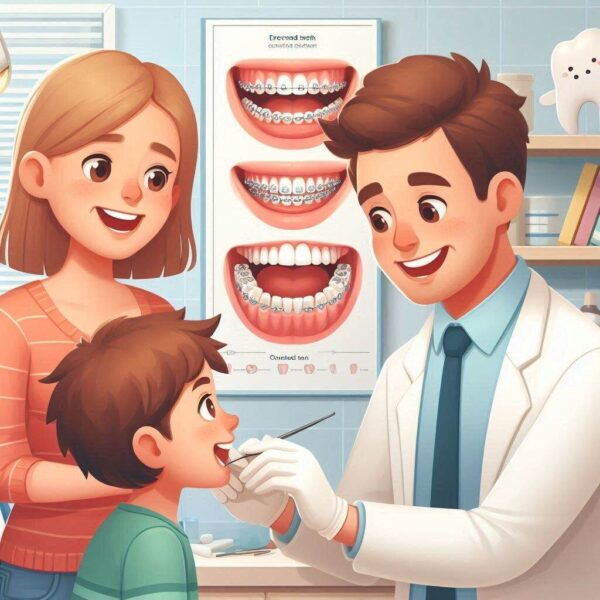
Exploring the Relationship Between Crowded Teeth and Tooth Mobility
Crowded teeth, characterized by misalignment or overlapping of teeth due to insufficient space in the jaw, can potentially lead to increased tooth mobility or looseness under certain circumstances. Here’s how crowded teeth may contribute to tooth mobility:
1. Poor Oral Hygiene
Crowded teeth are more challenging to clean effectively, as tight spaces between teeth make it difficult to remove plaque and bacteria. Inadequate oral hygiene can lead to gum disease, characterized by inflammation and infection of the gums.
As gum disease progresses, it can cause the supporting structures of the teeth, including the periodontal ligaments and jawbone, to weaken, potentially leading to increased tooth mobility.
2. Bite Irregularities
Crowded teeth may result in malocclusion or an improper alignment of the teeth and jaws. Malocclusion can create uneven forces on the teeth during biting and chewing, leading to excessive stress on certain teeth. Over time, this uneven pressure may contribute to tooth mobility or looseness, particularly in crowded areas where teeth are subjected to greater forces.
3. Dental Trauma
The misalignment of crowded teeth can increase the risk of dental trauma, such as chipping, fracturing, or dislodging teeth. Traumatic injuries to the teeth can damage the supporting structures and cause tooth mobility, especially if left untreated or if the trauma occurs repeatedly in crowded areas.
4. Periodontal Disease
Crowded teeth may also predispose individuals to periodontal disease, a condition characterized by the destruction of the gums and supporting structures of the teeth. As periodontal disease progresses, it can lead to gum recession, bone loss, and eventual tooth mobility or loss.
The Risks Of Having Crowded Teeth
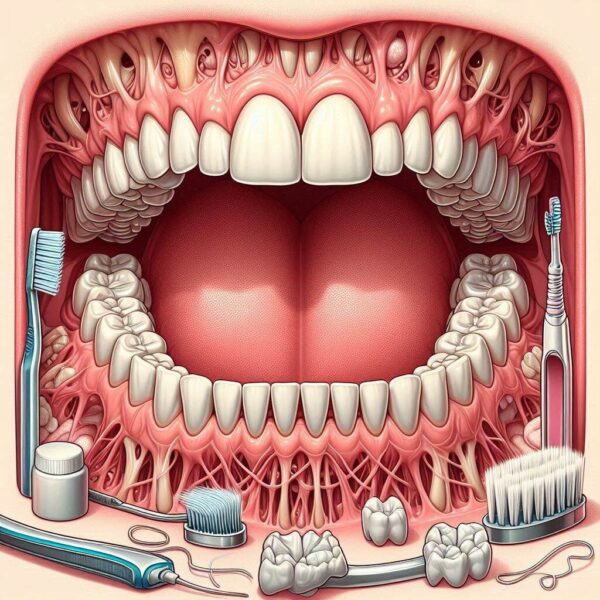
Understanding the Risks Associated with Crowded Teeth
Crowded teeth, characterized by misalignment or overlapping due to insufficient space in the jaw, pose several risks to oral health and overall well-being. Here are some potential consequences of having crowded teeth:
1. Increased Risk of Tooth Decay and Gum Disease
Crowded teeth create tight spaces where plaque and bacteria can accumulate, leading to an increased risk of tooth decay and cavities. Additionally, inadequate cleaning of crowded areas can contribute to gum inflammation and gum disease, as bacteria build-up irritates the gums and causes infection.
2. Difficulty Maintaining Oral Hygiene
Cleaning crowded teeth effectively can be challenging, as toothbrushes and dental floss may not reach all surfaces properly. As a result, individuals with crowded teeth may struggle to maintain optimal oral hygiene, increasing the risk of dental problems over time.
3. Tooth Wear and Damage
The irregular positioning of crowded teeth can lead to abnormal wear and tear on the enamel surfaces, making the teeth more susceptible to chipping, fracturing, or other forms of dental damage. Crowded teeth may also cause uneven distribution of biting forces, further contributing to tooth wear and damage.
4. Functional Issues
Crowded teeth can affect bite alignment and occlusal function, leading to issues such as difficulty chewing, jaw pain, and temporomandibular joint (TMJ) disorders. Malocclusion resulting from crowded teeth may also contribute to muscle strain and tension, causing discomfort and functional limitations.
5. Speech Impediments
In some cases, crowded teeth can interfere with proper tongue and lip movement, leading to speech impediments or pronunciation difficulties. The misalignment or irregular spacing of teeth may affect articulation and clarity of speech, causing self-consciousness and communication challenges.
6. Aesthetic Concerns
Crowded teeth can detract from the appearance of the smile, causing self-consciousness and impacting self-esteem. The visible misalignment or irregular spacing of teeth may affect smile aesthetics and facial harmony, leading to social and psychological discomfort.
Conclusion
Addressing crowded teeth is essential for improving oral health, function, and aesthetics. While various treatment options are available, including orthodontic interventions like braces or clear aligners, the most suitable approach depends on individual factors such as the severity of crowding and patient preferences.
Consulting with a qualified orthodontist is crucial for evaluating the condition, determining the optimal treatment plan, and achieving a straighter, more aligned smile.
By addressing crowded teeth promptly and effectively, individuals can enhance their oral health and confidence, enjoying the benefits of a healthy and beautiful smile. I hope now you are fully aware of How to fix crowded teeth.
Frequently Asked Questions (FAQs) about Fixing Crowded Teeth
Q1. Can crowded teeth be fixed without braces?
A1. Certain cases of mild to moderate crowding may be corrected using clear aligners or other orthodontic appliances. However, severe crowding often requires traditional braces or other advanced orthodontic treatments.
Q2. How long does it take to fix crowded teeth with braces?
A2. The duration of orthodontic treatment for crowded teeth varies depending on factors such as the severity of crowding, patient compliance, and treatment goals. On average, treatment with braces may take anywhere from 12 to 24 months or longer.
Q3. Are there any alternatives to braces for fixing crowded teeth?
A3. In addition to traditional braces, alternatives such as clear aligners (e.g., Invisalign) and lingual braces may be suitable for correcting crowded teeth. These options offer discreet treatment and may be preferred by some patients.
Q4. Can crowded teeth be fixed without orthodontic treatment?
A4. While orthodontic treatment is the most effective way to correct crowded teeth, certain dental procedures such as dental expansion, tooth extraction, or dental bonding may be used in combination with or as alternatives to orthodontic treatment in specific cases.
Q5. Will fixing crowded teeth improve my oral health?
A5. Correcting crowded teeth can significantly improve oral health by facilitating better oral hygiene, reducing the risk of tooth decay and gum disease, and improving occlusal function and bite alignment.
